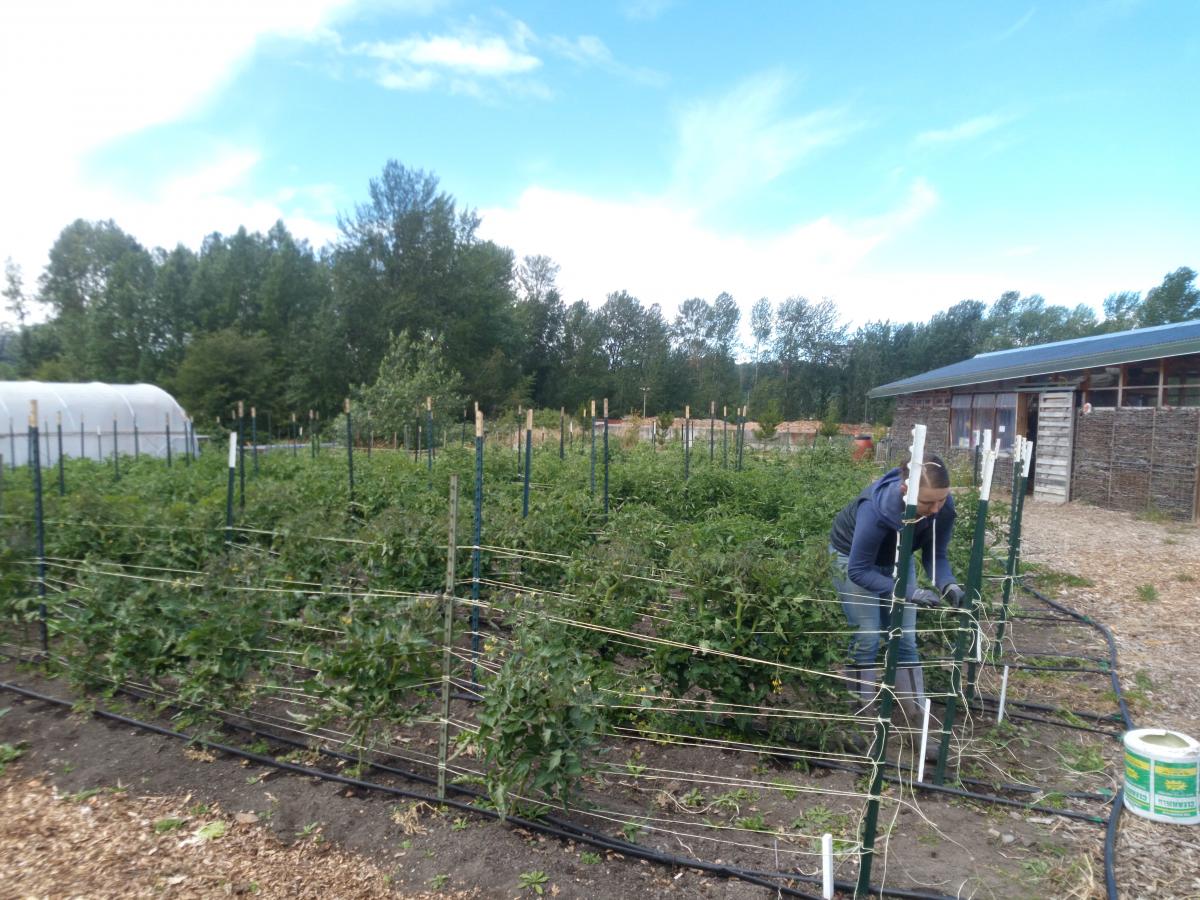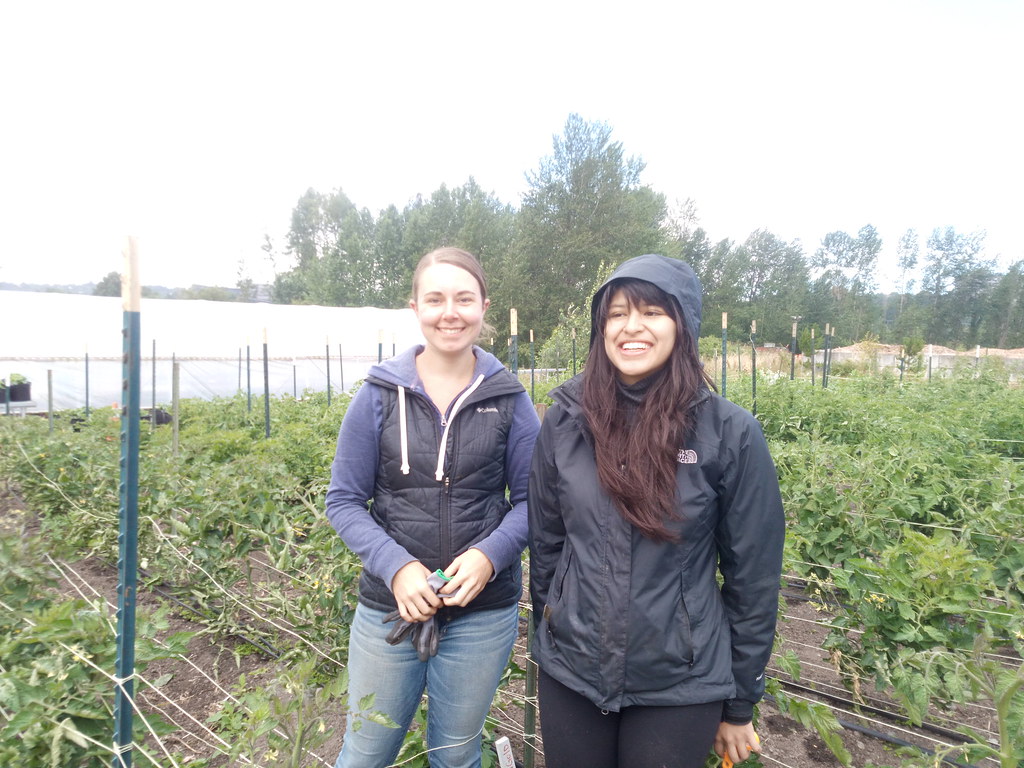
I was surrounded by a row of fields covered with a variety of crops, ready to learn what the UW Farm was up to this summer. Ellie Garcia handed me a tiny plum, one of the many fruits available at the farm, before detailing her experiences working there.
The UW Farm was holding its regular summer volunteer hours at the Center for Urban Horticulture. Student workers, including Garcia and Francis Olson were busy tying string to surrounding plants to maintain their posture and growth. All were smiles, considering it was overcast with a few showers. The UW Farm holds volunteer hours most days throughout the year, and all members of the UW community are welcome to stop by.
The workers who come out to volunteer find the community as important as the work, a lesson Garcia learned early on from Sarah Geurkink, the UW Farm manager.
“Something Sarah told me during my interview when I asked her what makes the UW Farm special is that its more than just a farm,” said Garcia.
“It brings a lot of people from different backgrounds together that don’t necessarily know anything about growing food or gardening,” added Olson. “People have an opportunity to learn about that in an urban setting.”
The UW Farm's Center for Urban Horticulture is located on the far northeast corner of campus, beyond the IMA, and past the intermural athletic fields and golf driving range. The Farm has about an acre of land dedicated to growing sustainable fruits and vegetables and a hoop house used to grow the more delicate crops. They have two other locations on campus, one near residence hall McMahon and one in Mercer Court.
The UW Farm has been uniting UW students and the community at large since 2005. Eleven years later, the farm has hosted hundreds of work parties, supplied several restaurants and community partners with produce, including Cultivate, the UW Club, UW Medical Center, HFS and the University District Food Bank. In 2015, 2,264 pounds of food was donated.
“You have the power to learn to grow your own food, and the UW Farm is not only a great resource for that learning and practice, but a great community of folks who are participating in this learning together,” Geurkink said.
The UW farm grows a variety of vegetables and fruits, like cucumbers, carrots, squash, and strawberries. The farm also has 194 unique plant varieties, including Hungarian Heart tomatoes, Chioggia Beets, and Dragon’s Langerie Bean.
Members who are a part of the Community Supported Agriculture program (CSA) can enjoy these healthy treats and receive a weekly selection of the current harvest. Anyone can join. Money accumulated from CSA goes towards purchasing seeds, tool replacements, fertilizer and more.
In 2015 alone, there were 37 CSA members (the number is growing), $23,338 in plant sales and 5,000 square feet of growing space added. Check out all the UW Farm's accomplishments in their 2015 annual progress report.
There are also a few things in store for the upcoming school year. Come spring 2017, the UW Farm will have its very own chickens.
Come rain or come shine, student workers are always working hard to make the UW Farm as best as it can be – I’ve experienced that firsthand.
The rewards are so tangible,” said Garcia. “It's refreshing to be outdoors and feel accomplished after harvesting the food I helped grow. When I take a bite of a sandwich, or any other meal, I now keep in mind that a group of people spent hours on the food I am eating.”
